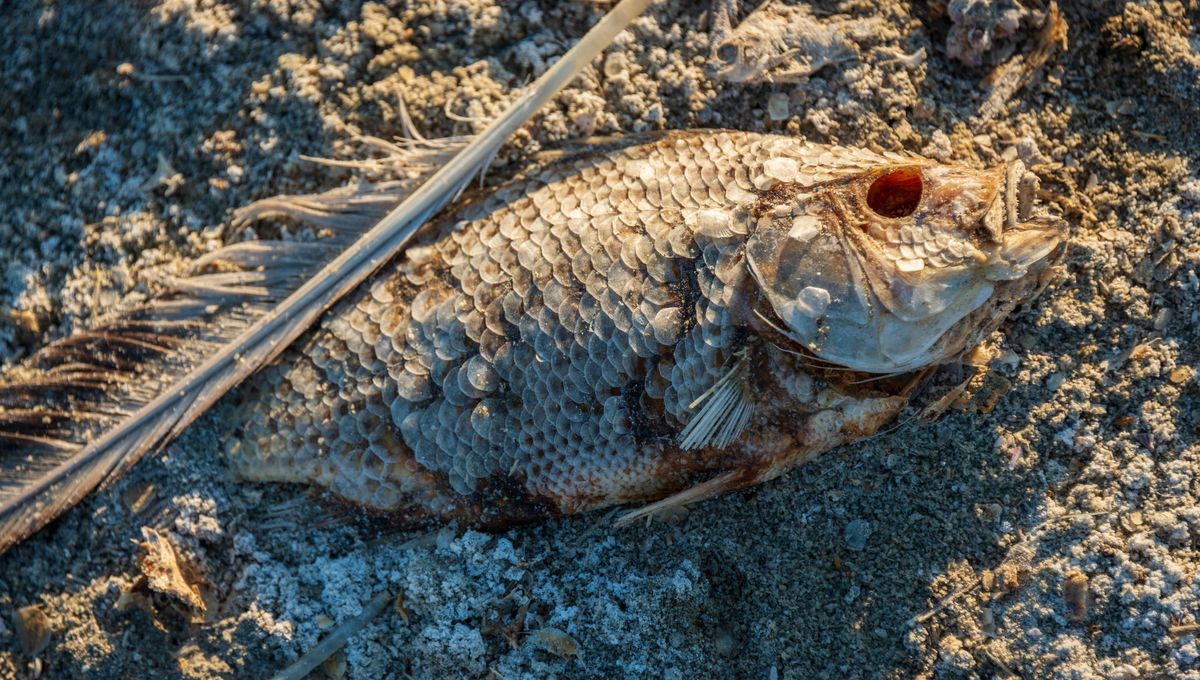
The Salton Sea, California’s largest lake, is producing more toxic hydrogen sulfide gas than previously thought, according to a new study. The levels are so high that they exceed the state’s air quality standards, posing a potentially greater risk to the health of local communities.
The lake is located around 257 kilometers (160 miles) east of Los Angeles. Although bodies of water filled the basin before, the existing sea formed in 1905 after the Colorado River breached an irrigation canal. This overflow water started the Salton Sea, which has mostly been maintained by runoff from the surrounding basin since 1907. Some of this runoff is produced by agricultural wastewater, which flows into but not out of the lake, making it more saline than the Pacific Ocean.
During the 1940s and ’50s, the surrounding area became a popular vacation spot while new residents flocked to communities near the shore. At this point in the lake’s history, it was a relatively healthy body of water. However, that changed during the second half of the last century when the water level rapidly dropped. This was due to a mix of factors, including a hotter and drier climate as well as changes to policies that diverted more water away from the basin. Without this water, the lake’s salt concentrations began to rise, and nutrients from agricultural runoff allowed algal blooms to thrive. These blooms suffocated the lake by depriving it of oxygen, killing fish and plants as a consequence.
The desiccating organic matter left in the lake emits hydrogen sulfide, which smells like rancid eggs or bad farts. This gas is known to be dangerous to people’s health, causing headaches, nausea, fatigue, and even long-term neurological and respiratory issues, even at low levels of exposure.
And now new research from Brown University has found that emission levels of this harmful gas are much higher than previously assumed. In fact, the authors believe the emission rates regularly exceed the state’s air quality standards and have been “vastly underestimated” by government air-quality monitoring systems.
“The communities around the Salton Sea are on the front lines of a worsening environmental health crisis,” Mara Freilich, an assistant professor in Brown University’s Department of Earth, Environmental and Planetary Sciences, explained in a statement.
“Our study shows that hydrogen-sulfide emissions are not only more intense than previous monitoring captured, but they are systematically underreported — especially when sensors are placed away from the lake or out of alignment with prevailing winds.”
Freilich and her colleagues from Loma Linda University and the Universities of California at Berkeley and Los Angeles collaborated with Alianza Coachella Valley – a local nonprofit community organization – to investigate the source of gas emissions in the area. Their analysis drew on data from weather stations and air-quality sensors operated by the South Coast Air Quality Management District (SCAQMD), a regional regulatory agency. This information was supplemented by remote sensing observations and additional air-quality sensors deployed by the research team within the lake itself.
The findings were cause for concern. From 2013 to 2024, SCAQMD sensors in the communities of Indio, Mecca, and the Torres Martinez Indian Reservation repeatedly recorded hydrogen sulfide concentrations that exceeded California’s safety standards. These violations were most frequent during the summer, peaking in Torres Martinez – the community closest to the lake. In fact, every August during the study period, sensors in Torres Martinez registered more than 250 hours of emissions above the state limit.
Wind patterns played a key role in the spread of emissions. The researchers found that elevated hydrogen sulfide levels in nearby communities typically occurred when winds blew from the lake. Meanwhile, the sensor placed directly in the lake consistently recorded high hydrogen sulfide levels regardless of wind direction – strong evidence implicating the lake as the primary source of the emissions detected nearby.
Currently, only three communities around the lake are routinely monitored by regulatory agencies, leaving other potentially affected areas without regular oversight.
“Our results indicate that a significant portion of [hydrogen-sulfide] emissions remains unaccounted for, potentially being transported to communities without air monitoring stations,” the team wrote in their study.
The results urgently call for increased air-quality monitoring around the Salton Sea, the team says. There is also a need for more research to examine the health of the surrounding communities.
“Community residents exposed to hydrogen sulfide are impacted not only in their physical health — experiencing respiratory irritation, headaches and fatigue — but as well in their quality of life,” Diego Centeno, study co-author, added.
“As the sea’s shoreline continues to recede and sulfate concentrations increase, there is a growing concern that hydrogen sulfide will emit more frequently and at greater magnitudes.”
The people most affected by the lake’s emissions are mostly Latinx and Indigenous (Torres Martinez Desert Cahuilla Indians) and already experience higher rates of asthma and other respiratory illnesses.
“This is a textbook case of environmental injustice,” Aydee Palomino, co-author and project manager for the Campaign for Thriving Salton Sea Communities, explained.
“People in the Coachella and Imperial valleys are breathing in pollutants that are under the radar of traditional monitoring systems. Our work highlights the power of community science to expose these gaps and push for equitable solutions.”
The paper is published in GeoHealth.
Source Link: Salton Sea: California's Largest And Most Polluted Lake Is Even More Toxic Than Thought